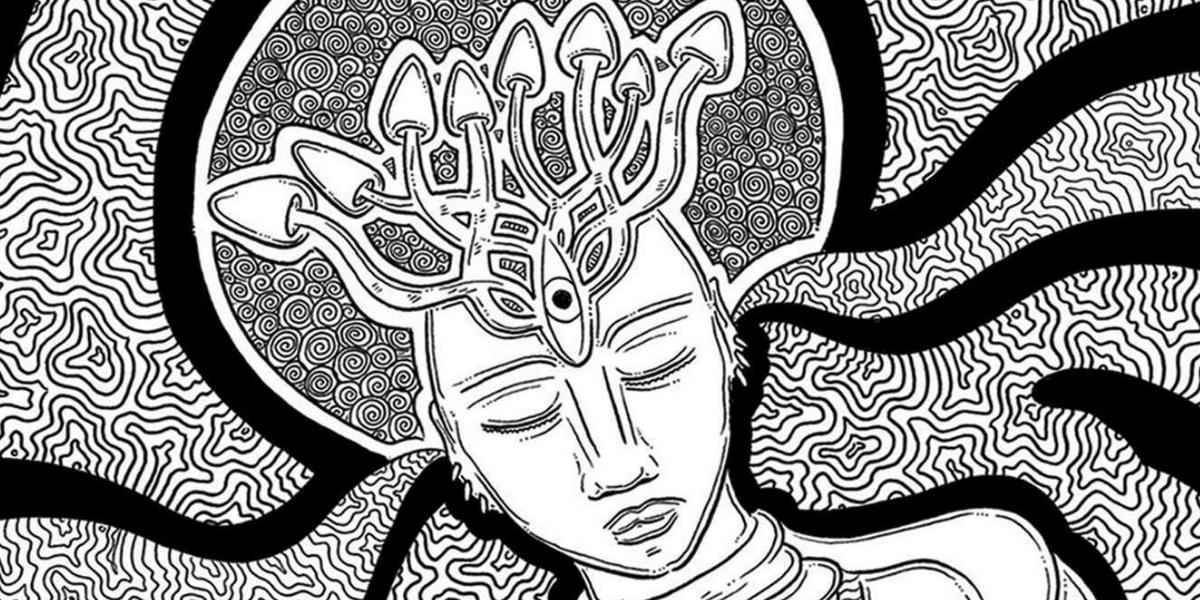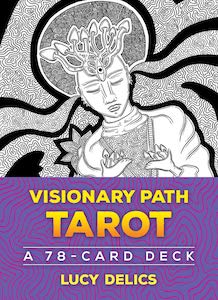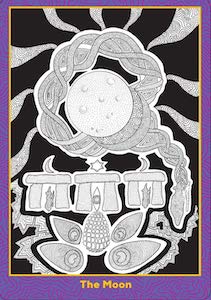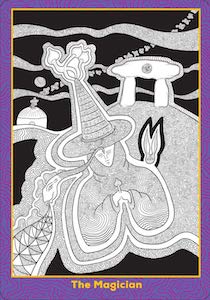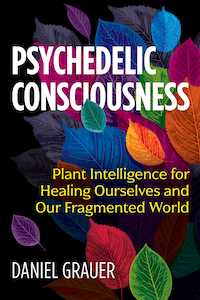
Psychedelic Consciousness: Plant Intelligence for Healing Ourselves and Our Fragmented World, by Daniel Grauer
Park Street Press, 9781644110300, 256 pages, July 2020
Daniel Grauer’s book Psychedelic Consciousness: Plant Intelligence for Healing Ourselves and Our Fragmented World goes as wide as it does deep. This book is an inspired inter-mixed odyssey of both the historical and personal in relation to psychedelics, the culture of usage and practice, and the implications and opportunities present to us today. The best thing about this book is that it lacks the usual pretense, which is part of its charm. At it’s heart, this book is a testament to the author’s desire to relay the message that a meaningful, modern personal journey with psychedelics as a spiritual path is both possible and presently available to us all.
In an era where first hand experience trumps all and the very nature of psychedelic experimentalism is often a solo pilgrimage to begin, this book is wonderfully timely. The jump between subjects occasionally feels like leaps, but the author’s aim is evident and reflective here in the book’s construction, providing a landscape that doesn’t sink us into theory but rather invites us into understanding. Psychedelic Consciousness is an optimistic book — one that looks towards the reader with an open-ended invitation.
This book lends itself to thought-work relating both to becoming-aware-of and dismantling our current biases on psychedelic culture and plant medicine. There is an intimate communion with Grauer as he shares his unique path into his own understandings. He offers practical tips for journeying along with a myriad of personal findings through his explorations.
I think many a psychedelic journeyer has reached the moment of desiring to leap into authentic journey into the jungle or connect with indigenous practices, casting aside the nihilistic and/or purely hedonistic usage and entering a deeper mystery, meaning, and mythology of these sacred medicines. It is natural to start longing for something transpersonal, restorative, and spirited. Grauer, in sharing his experience, offers a lens into what this longing can offer and how it influenced him in his own work, his own dream, and his own hope for bridging the indigenous world with the modern practitioner.
Psychedelic Consciousness calls the reader to the question what it actually means to be on an integrative, integral journey with our plant teachers. Grauer poses the question to us that he asked of himself: If I were to die, what song would I be playing? If the world were to end tomorrow, would I be happy with who I am?
Beyond the individual in relationship to journeying and practice, Grauer calls readers to lean into our relationship with the unseen, which takes both courage and maturity. Trauma and oppressive ideologies bring fragmentation to the psyche, and Grauer posits that it’s our plant allies that can aid us in restoration. Grauer’s pathways of explorations and guidance offer an opportunity to explore how we ourselves relate to our plant teachers and what our journeying is all about.
The ending of the book is an invitation to connect with Grauer personally through his website — a testament to the book’s weaving qualities and the author’s desire to instigate and inspire an ongoing, evolving, experiential conversation.
Overall, Psychedelic Consciousness is a wonderful resource for the tidal wave of people who are new to psychedelics and contemplating consciousness. It’s especially geared for Western minds who have had mystical experiences, or perhaps simply *an experience* with psychedelics and wondered what it was all about. I think it’s best for people experimenting or new to their journeys, though people who have been on a medicine path can also benefit from the questions it poses throughout to further refine their own practice and dream of what the possibilities and potentials are.

Kat Grasso is a poet, creator, creature, and devoted witch currently dancing up and down the west coast. You can drop into some zines on poetsareprophets.com. Her happy obsessions include occultism, prophecy, the female gaze x practice / voice, and having an excellent fucking time.

